Slavery in Ohio
Located on the northern side of the Ohio River, which served as both a physical and symbolic boundary between slavery and freedom, the state played a pivotal role in the formation, maintenance, contestation, and partial dismantling of the American slave system. From its early days as part of the Northwest Territory to the years following the Civil War, Ohio has always been more entangled with slavery and its consequences than the mythology of its northern geography suggests.
Slavery in Ohio began not in the institutions of the state but in the legacies inherited from the French and British colonial systems that preceded American settlement. As early as the 1700s, French traders operating in what would become Ohio had enslaved Indigenous and African peoples, using them to assist in trade, labor, and the maintenance of frontier outposts. Although the Northwest Ordinance of 1787 officially prohibited slavery in the territory that included Ohio, the law proved porous in practice. Loopholes in the ordinance allowed for “voluntary” indentured servitude, which many slaveholders exploited as a euphemism for slavery. Slaveholding settlers from Kentucky and Virginia, eager to push northward, brought enslaved people with them, often circumventing restrictions through reclassification and forced contracts.
Even as Ohio became a state in 1803, its lawmakers engineered legal mechanisms to sustain white supremacy and restrict Black mobility. Ohio’s Black Codes were among the harshest in the North. Free Black residents were required to carry proof of freedom, post surety bonds—sometimes up to $500—and register with local courts. These laws were not only discriminatory but also aimed at deterring migration of free Black people into the state, effectively reducing competition with white laborers and upholding a racial hierarchy even in a supposedly “free” state. Ohio's constitution may have barred slavery by name, but in practice, it enabled a two-tiered racial society that placed Black residents under a legal and economic yoke distinct from the system in the South but deeply related to it.
Ohio’s economy in the antebellum era also reveals complicity in the broader slavery industrial complex. Cincinnati, which emerged as a commercial hub, particularly illustrates this contradiction. Though situated in a free state, Cincinnati’s wealth grew substantially from its river-based trade, which included cotton, sugar, and tobacco—all products of Southern slave labor. Ohio banks, insurance companies, and mercantile houses profited from underwriting Southern plantations and financing slave-based commerce.
Even abolitionist-friendly towns such as Oberlin could not fully disentangle their economic interests from the institutions that sustained slavery. The railroads and canal systems, heavily subsidized and promoted in Ohio, facilitated trade routes that directly or indirectly funneled the profits of enslaved labor into the heart of the Midwest.
Colleges and universities in Ohio also share in this legacy. Institutions such as Miami University, Ohio University, and Denison were founded during the early 19th century and attracted donations, student tuitions, and endowed funds from families and industries connected to the slave economy. Case Western Reserve University, though more progressive in its later years, benefited from early donors who accumulated wealth from the cotton industry and related commercial enterprises.
These institutions provided the intellectual infrastructure of the state and trained generations of leaders, many of whom perpetuated racial exclusion and segregation long after slavery’s formal abolition. Even today, questions linger about how endowments and land holdings were tied to ill-gotten wealth acquired through the exploitation of enslaved labor.
The phenomenon of slave migration also shaped Ohio's demographic and political landscape. As the Underground Railroad developed, Ohio became a crucial corridor for freedom seekers escaping bondage in Kentucky, Virginia, and other Southern states. Towns such as Ripley, Oberlin, and Salem became sanctuaries, and Black and white abolitionists worked side by side to facilitate escape routes that extended into Canada.
Yet, migration did not only flow northward. Enslaved people forcibly relocated through Ohio as part of slave coffles being transported from the Upper South to the Deep South encountered a brutal and degrading form of forced migration that underlined the country’s growing dependence on slavery. Though Ohio outlawed the slave trade within its borders, clandestine operations and complacent local authorities enabled such movements to continue.
Slave laws in Ohio further highlight the state’s ambiguous position. The 1804 and 1807 Black Laws criminalized a range of normal civil behaviors for African Americans, denied them the right to vote, to serve on juries, or to attend public schools. These laws remained in place until the mid-19th century and were only repealed after intense public pressure from Black communities and their allies. Ohio’s legal system often sided with slave catchers, and the Fugitive Slave Act of 1850 intensified this injustice. Black residents, both free and escaped, were targeted by bounty hunters, often with the support of local sheriffs and judges. High-profile cases such as the Oberlin-Wellington Rescue of 1858 dramatized the conflict, as local residents defied federal authorities to protect a captured fugitive slave, resulting in arrests and trials that galvanized the abolitionist movement.
The Freedmen’s Bureau, established after the Civil War, had a limited but noteworthy impact in Ohio. While the Bureau’s major operations were concentrated in the South, many newly freed Black people migrated northward seeking protection and opportunity. Ohio became a settlement zone for numerous Black families fleeing Reconstruction-era violence. The Bureau helped facilitate labor contracts, education initiatives, and legal assistance, though it often lacked sufficient resources and support from local governments. Many Black Ohioans established independent communities, churches, and schools in defiance of segregationist policies and economic exclusion.
Among Ohio’s greatest contributions to the abolition of slavery were its Black abolitionists, who played indispensable roles in shaping the moral and political discourse of the time. John Mercer Langston, born free in Virginia and later active in Ohio, became one of the first African American lawyers and eventually the first Black congressman from Virginia. He taught at and helped establish the law department at Howard University. Sojourner Truth spent time speaking across Ohio, galvanizing audiences with her testimony. Frances Ellen Watkins Harper toured Ohio extensively, promoting abolition, women’s rights, and temperance. The powerful voices of these individuals helped to reframe the national conversation on race and liberty.
Ohio also produced white allies who embraced radical abolitionist politics, including Salmon P. Chase and Benjamin Wade. Yet, Black abolitionists from Ohio such as William Howard Day and Charles Langston bore the brunt of organizing, strategizing, and confronting the threats of physical violence, imprisonment, and institutional marginalization. Their writings, sermons, and public oratory sustained a culture of resistance in the face of legal persecution.
In terms of labor rights and civil rights movements, Ohio's Black population made significant strides in the post-Emancipation era. In cities like Cleveland, Columbus, and Cincinnati, Black workers organized mutual aid societies, fraternal orders, and unions to protect their economic interests. Many became involved in the early struggles for fair housing, public school desegregation, and employment equity during the 20th century. Civil rights figures such as Carl Stokes, the first Black mayor of a major U.S. city (Cleveland), were part of a long lineage of community organizers and political leaders rooted in the historical fight against slavery’s legacies. Freedom fighters in Ohio consistently confronted discriminatory practices in hiring, policing, and public accommodations, and their advocacy laid groundwork for national movements.
The state’s connection to Indigenous dispossession also connects it to the broader matrix of American slavery. The Indian Removal Act of 1830 and the Trail of Tears disrupted not only Native American lives but also entangled Black and Indigenous communities in shared suffering. Ohio was home to several Native nations, including the Shawnee, Miami, and Wyandot, who faced expulsion or pressure to cede lands.
Many free and enslaved Black people lived among Native tribes or passed through Indigenous territories while escaping enslavement. The violence of forced relocation—including the infamous Trail of Tears—was mirrored by the forced migration of enslaved people, revealing how U.S. expansionism and racialized domination operated across different populations. Some Ohio residents supported these removal policies, while others opposed them on moral or religious grounds, reflecting the divided consciousness of the time.
Even today, the legacies of slavery in Ohio persist in the structural inequalities that afflict African American communities. Racial wealth gaps, disparities in education and health care, redlining, mass incarceration, and environmental racism are the modern echoes of the slave economy and its descendants. Many of the banks, universities, and corporations that once benefited from slavery remain powerful institutions, often reluctant to confront or redress their historical roles. Activists, scholars, and community organizers in Ohio continue to demand truth, reconciliation, and reparative justice.
Ohio’s history cannot be accurately told without a full accounting of its entanglement with slavery. Though the state presented itself as a beacon of freedom, it was also a battleground where freedom was contested, constrained, and continuously redefined. Through the voices of its freedom fighters, the resistance of its communities, and the enduring scars of injustice, the story of slavery in Ohio remains a vital chapter in the broader narrative of America’s long and unfinished journey toward justice.
While the myth of Ohio as a safe haven for fugitive slaves persists in popular memory, the actual experiences of Black individuals in Ohio reveal a much more fraught and dangerous landscape. Despite its formal status as a free state, Ohio often failed to provide real sanctuary. Fugitive slaves lived in constant fear of capture, and the legal mechanisms in place—particularly after the enactment of the Fugitive Slave Act of 1850—meant that even longtime residents could be violently seized, denied legal rights, and sent back into bondage. The act criminalized any assistance to escaped slaves and deputized ordinary citizens to act as enforcers. In Ohio, this translated into kidnappings, sham trials, and the corruption of local justice systems. Entire Black communities had to mobilize, organize, and at times arm themselves to resist these incursions.
The Ohio River, though a boundary between slavery and freedom, became an active site of tension and conflict. It served as a gateway to the North for thousands of freedom seekers, but its proximity to slave-holding Kentucky made it perilous. Cities like Cincinnati became flashpoints in the battle between freedom and bondage. While abolitionist sentiment flourished in some circles, racial violence was also a common response to the increasing visibility and activism of free Black people.
Cincinnati witnessed multiple race riots in the 1820s, 1830s, and 1840s, in which white mobs—often with the tacit approval of law enforcement—attacked Black neighborhoods, destroyed homes and businesses, and drove families out of the city. These riots were sparked by economic competition, racist fears of social mixing, and the growing political assertiveness of Black communities. The contradictions were sharp: even as Cincinnati was a major node of the Underground Railroad, it was also a site of deep-seated hostility toward African Americans.
Ohio’s Black population, despite these threats, displayed extraordinary resilience. The establishment of Black settlements throughout the state—such as the Wilberforce Colony, the Longtown community, and the rural enclaves of Morgan and Gallia Counties—demonstrated a fierce commitment to autonomy and self-determination. These communities built their own churches, schools, and governance structures. Education was a particular focus, with Black Ohioans pushing for access to schools and creating independent educational institutions when white authorities excluded them.
Wilberforce University, established in 1856 and named after the British abolitionist William Wilberforce, became the first college owned and operated by African Americans. It emerged as a beacon of Black intellectual life, supported by both the African Methodist Episcopal Church and the broader abolitionist movement. The institution trained teachers, ministers, and activists who would play critical roles in the fight for Black liberation across the country.
The legacy of slavery also affected Ohio’s judicial and political systems. The courts were often the instruments through which freedom was denied or revoked. Judges enforced racist laws, upheld the rights of slave catchers, and frequently ruled against Black litigants regardless of the merits of their claims. Yet, the legal system also became a terrain of resistance. Black Ohioans increasingly demanded legal recognition, filed suits to protect their property and persons, and used the courts to challenge discriminatory practices. The legal challenges posed by Black Ohioans helped lay the groundwork for the development of civil rights law in the United States.
Ohio’s political elite were deeply divided over the issue of slavery. While the Whigs and later the Republican Party gained strength in the state, the Democratic Party retained significant power, particularly in rural areas. Many Ohio Democrats were hostile to abolitionism and supported policies aimed at preserving racial hierarchies.
The state's newspapers reflected this division, with some promoting anti-slavery ideals while others trafficked in racist propaganda and fear-mongering about Black political participation. As the Civil War approached, Ohio became a site of intense ideological struggle. The state's support for the Union was critical, and thousands of Ohioans enlisted in the fight against the Confederacy. However, it is often overlooked that many of these soldiers were motivated by the preservation of the Union, not the abolition of slavery.
Nonetheless, Black Ohioans volunteered to fight in the war even before they were legally allowed to do so. The formation of Black regiments, such as the 5th United States Colored Infantry, included hundreds of men from Ohio. These soldiers not only fought bravely on the battlefield but also challenged white supremacist assumptions about Black inferiority. Their service became a powerful argument in favor of full citizenship and civil rights. After the war, returning Black veterans often became leaders in their communities, advocating for voting rights, education, and equitable treatment under the law.
The postwar period did not bring the justice many had hoped for. Reconstruction policies were limited in their reach in Ohio, and while slavery was legally abolished, racial discrimination persisted in new forms. Redlining, segregation, job exclusion, and voter suppression became the tools of a new racial order. The migration of Southern Blacks to Ohio during the Great Migration expanded the state’s Black population and intensified demands for civil rights, but it also led to new waves of white backlash. Cities like Cleveland and Columbus developed rigid patterns of racial segregation, reinforced by government policy and private industry.
Corporate and institutional complicity in the slavery economy continued long after abolition. Many of Ohio’s banks and insurance companies had long histories of underwriting slave-based businesses. Companies that grew into national giants—like Procter & Gamble and other Cincinnati-based firms—traded directly with the South or were supported by capital investments rooted in slavery profits.
Land grant universities like The Ohio State University were built on territories forcibly taken from Indigenous nations and benefited from federal land grants funded by the sale of expropriated lands. The Morrill Act of 1862, which provided public land to fund colleges, disproportionately hurt Native peoples and mirrored the logic of enslaving Black labor for national development. These economic arrangements created interlocking systems of racial domination and wealth accumulation that still shape Ohio’s society today.
The involvement of Ohio in Native removal further demonstrates the interconnectedness of slavery and settler colonialism. Though the Trail of Tears primarily affected Southeastern tribes, the policy framework established by the Indian Removal Act of 1830 impacted Indigenous peoples throughout Ohio and the Midwest.
Treaties negotiated under duress, the forced relocation of the Wyandot people from Ohio in 1843, and the displacement of the Shawnee and Florida were all part of this national campaign to clear land for white settlement. Some of this land was then allocated or sold to white settlers whose wealth was generated from or invested in slavery-related industries. In this way, the fates of Indigenous and Black peoples were entwined in systems of racialized expropriation, removal, and exploitation that served the interests of white expansion.
Ohio was also deeply involved in the politics of memory after slavery. In the late 19th and early 20th centuries, public commemoration in the state often obscured the role of slavery and Black resistance. Civil War monuments praised Union generals and white soldiers while largely ignoring the contributions of Black troops. The narratives that circulated in schools and public discourse celebrated Ohio’s role as a “free state” while downplaying or denying the state’s complicity in racial oppression. This selective memory served to maintain the illusion of northern moral superiority while erasing the experiences and contributions of African Americans.
Despite these erasures, Black communities in Ohio preserved their own histories. Through oral traditions, church archives, community newspapers, and family records, the memory of slavery and the struggle for freedom endured. Local historians, often working outside of mainstream institutions, documented the lives of formerly enslaved people and the achievements of Black Ohioans. Organizations like the Ohio Black History Association, the African American Archives of the Western Reserve Historical Society, and the Underground Railroad Museum in Flushing, Ohio, have played vital roles in preserving and disseminating these histories.
The civil rights movement in Ohio built directly upon this legacy of struggle. From the 1940s through the 1970s, Black Ohioans organized to demand fair housing, school integration, and an end to police brutality. The Congress of Racial Equality (CORE), the NAACP, and the Urban League were all active in Ohio’s major cities. Community leaders, often rooted in the Black church, used nonviolent protest, litigation, and public education campaigns to challenge segregation and discrimination. The uprisings in Cleveland in 1966 and the student protests at Kent State and Ohio State reflected the growing frustration with systemic racism and political repression. These movements, like their predecessors, were rooted in a long history of Black resistance that stretched back to the days of slavery.
Today, the legacy of slavery in Ohio can be seen in enduring racial disparities in income, health outcomes, educational access, housing, and criminal justice. Black communities are over-policed, underfunded, and too often excluded from the corridors of power. Yet, these same communities continue to resist and reimagine what freedom looks like. From grassroots organizing to legal challenges, from cultural preservation to policy advocacy, Black Ohioans are continuing the fight begun by those who escaped slavery, challenged racist laws, and demanded full humanity in the face of relentless oppression.
The reckoning with Ohio’s history of slavery and its enduring legacies is far from over. Efforts to unearth the past and confront its consequences are ongoing. Historians, educators, activists, and descendants of both the enslaved and the enslavers are engaged in difficult conversations about accountability, reparations, and historical truth. The call for institutional acknowledgment—whether from universities, corporations, or governments—is growing louder. And as Ohio continues to confront its past, it also has the opportunity to shape a future that is more just, inclusive, and honest about the foundations on which it was built.
The complexities of slavery’s legacy in Ohio extend well into the 21st century through the structural frameworks and institutional practices that were born from centuries of racialized policy and economic exploitation. One of the most deeply entrenched mechanisms sustaining these inequities has been the development of racially segregated neighborhoods, particularly in Ohio’s urban centers. Redlining practices implemented throughout the 20th century by banks, real estate agencies, and federal housing authorities codified the marginalization of Black Ohioans by denying mortgages, credit access, and insurance services in Black neighborhoods.
Cities such as Cleveland, Columbus, Cincinnati, Akron, and Dayton were transformed by these policies into deeply unequal urban landscapes where predominantly Black communities were systematically underinvested in, leading to cycles of poverty, disinvestment, and infrastructural decay that persist to this day.
These redlined zones often correspond to areas where Black families settled after fleeing Southern racism and economic hardship during the Great Migration. Lured by the promise of jobs in Ohio’s industrial sector—particularly in steel, rubber, auto manufacturing, and railroads—Black migrants found themselves locked into the lowest-paying, most dangerous jobs and barred from union leadership, skilled trades, and upward mobility. Many of the same corporations that had historically profited from Southern slavery, either directly or indirectly, found new ways to exploit Black labor in the North. Even after the abolition of slavery, these companies continued to treat Black laborers as expendable, using segregated hiring practices and promoting a racial hierarchy within the workforce.
Educational institutions in Ohio played their own role in reinforcing the legacy of slavery. Public school systems in urban areas, particularly those with large Black populations, were often underfunded and overpoliced. School funding based on local property taxes meant that communities already devastated by redlining and housing discrimination could not adequately support their own educational infrastructure.
This systemic inequality, coupled with discriminatory disciplinary practices that disproportionately punished Black students, produced a school-to-prison pipeline that affected generations of Ohio’s Black youth. Universities that benefited historically from slavery-linked funding and land grants often excluded Black students outright well into the 20th century, and even after formal desegregation, created hostile and alienating environments for Black faculty and students.
The carceral system in Ohio continues to reflect the racial caste system that slavery initiated. The state’s prison population has long been disproportionately Black, even though African Americans comprise a minority of the overall population. Black Ohioans are more likely to be arrested, more likely to receive longer sentences, and more likely to be incarcerated for non-violent offenses than their white counterparts. Many of Ohio’s prisons are located in rural, predominantly white communities, where they serve as economic lifelines for residents while warehousing Black and brown bodies removed from inner cities. Prison labor, which is often unpaid or paid at subminimum wages, echoes the logic of slavery in its denial of full personhood and exploitation of labor for profit.
Despite these oppressive systems, Ohio has been home to vibrant and powerful movements for racial justice. The legacy of the Black freedom struggle, rooted in the state’s abolitionist past, has remained alive through every generation. In the post–civil rights era, organizations like the Ohio Conference of the NAACP, the Urban League affiliates, and independent Black-led community groups have mobilized around issues ranging from police brutality to voter suppression to environmental racism. Their work builds upon the foundation laid by 19th-century abolitionists and Reconstruction-era leaders who envisioned Ohio not only as a place of refuge, but also as a launching ground for national transformation.
Environmental justice has emerged as another site where the legacy of slavery persists. Many of Ohio’s Black communities have been situated near polluting industries, waste incinerators, and hazardous material sites, a pattern that reflects longstanding racial exclusion from decision-making in urban planning and zoning. Communities such as East Cleveland, parts of South Columbus, and neighborhoods in Dayton and Toledo have faced elevated rates of asthma, lead poisoning, and cancer linked to environmental hazards. These patterns are not accidental; they are the result of deliberate decisions made by industries and governments that have long prioritized profit over the health and well-being of Black residents. Environmental racism, like redlining and mass incarceration, is an outgrowth of the same ideologies that justified slavery.
Meanwhile, cultural expressions of Black identity in Ohio have flourished despite attempts at erasure and containment. From the jazz clubs of Cleveland’s Central neighborhood to the gospel traditions of Cincinnati’s Black churches, from the poetry of Paul Laurence Dunbar of Dayton to the activism of contemporary spoken-word artists and hip hop performers, Black Ohioans have used the arts to assert their humanity, critique injustice, and preserve their history. Cultural institutions such as the National Afro-American Museum and Cultural Center in Wilberforce provide crucial spaces for education, reflection, and pride, documenting both the horrors of slavery and the triumphs of resistance and resilience.
The legacy of slavery also echoes in Ohio’s political structures, where underrepresentation of Black voices continues to shape policy outcomes. Gerrymandering, voter ID laws, and the purging of voter rolls have disproportionately affected Black voters, weakening their electoral influence and undermining the democratic process. These tactics are modern tools in a centuries-old campaign to limit Black political agency—a campaign that began with slavery, continued through Reconstruction, and finds new life in today’s laws and practices. The same impulses that denied literacy to enslaved people now manifest in the disenfranchisement of entire communities.
Efforts at reparative justice in Ohio remain fragmented and incomplete. While there have been local acknowledgments of historical injustices—such as public apologies for past racism or the removal of Confederate symbols—systemic attempts to redress the economic and social legacies of slavery are still lacking. Discussions of reparations have gained traction in academic circles, advocacy groups, and among progressive lawmakers, but resistance remains strong. Institutions that benefited from slavery—whether financial firms, universities, or local governments—have been slow to conduct or publish full audits of their complicity. When they have acknowledged these ties, they have rarely committed to meaningful restitution.
Nonetheless, grassroots campaigns continue to push for truth, reconciliation, and reparations. Community members have called for the redistribution of land, the funding of Black-owned businesses, the expansion of public education, and investment in mental health services and housing as a means of repairing the damage inflicted by centuries of racial violence. These movements reflect the persistence of Black political vision, shaped in part by a long historical memory that connects contemporary struggles to the battles waged by freedom seekers, abolitionists, and civil rights warriors across Ohio’s history.
In many ways, the entire architecture of Ohio’s modern economy, society, and built environment is shaped by the legacy of slavery. From the wealth stored in university endowments to the layout of cities, from the placement of highways that cut through Black neighborhoods to the disinvestment that followed in their wake, every major institution in the state has been touched by this history. The denial of this fact is itself part of the problem, contributing to the invisibility of Black suffering and resistance in the mainstream narrative of Ohio’s past.
This legacy can be seen in the physical landscape as well. Many buildings still standing in cities like Cincinnati, Columbus, and Marietta were built with capital derived from slavery, Southern trade, or related industries. Historic homes, warehouses, and civic buildings reflect an architecture of exploitation. Streets named after slaveholders, traders, or anti-abolitionist politicians dot the urban landscape.
The names and monuments that populate Ohio’s public spaces often obscure rather than reveal the true history of the state. Efforts to rename buildings, remove monuments, or install markers honoring abolitionists and formerly enslaved people have faced resistance, but also gained momentum in recent years, particularly following national reckonings with systemic racism.
Education remains a key battleground in the fight to fully confront Ohio’s slavery legacy. While some school districts have incorporated curricula that discuss the Underground Railroad and local abolitionist figures, far fewer have engaged with the deeper structural ties between Ohio and the institution of slavery.
Textbooks and classroom instruction often continue to present Ohio as a heroic agent in the fight against slavery without acknowledging the contradictions and complexities of its history. Without a more robust, honest, and critical engagement with this history, new generations of Ohioans may inherit the myths but not the truths necessary for justice and reconciliation.
In truth, the story of slavery in Ohio is not only one of complicity and resistance, but of unfinished business. The ghosts of forced labor, racial terror, and economic exploitation remain embedded in the institutions and landscapes of the state. But so too do the echoes of Black resilience, creativity, and resistance. Ohio’s legacy of slavery is not a closed chapter in the past—it is a living issue that demands recognition, accountability, and sustained effort to repair what has been broken.
The denouement of slavery’s long arc across the Ohioan landscape cannot be understood solely through legislative enactments or economic transitions; rather, it must be apprehended through a dialectical synthesis of racialized memory, epistemic violence, and the ongoing negotiation of historical accountability. As critical theorists such as Saidiya Hartman and Walter Johnson have argued, the afterlives of slavery are inscribed not only in institutional arrangements and economic infrastructures but also in affective registers—in the collective silences, hauntologies, and contested memorializations that structure American racial consciousness.
In Ohio, these afterlives are visible in the palimpsest of urban geographies, juridical frameworks, and cultural imaginaries that continue to privilege whiteness as normative, while relegating Black subjectivity to the realm of the subaltern.
Ohio’s intellectual and institutional elite—particularly within the academy—bear a unique responsibility in mediating the state’s relation to its slave-connected past. Universities such as Miami, Denison, Ohio University, and even Oberlin, long venerated for their abolitionist sympathies, must be rigorously examined not merely for what they opposed, but for what they sustained through omission and economic entanglement.
Recent historiographies—such as Craig Steven Wilder’s Ebony and Ivy: Race, Slavery, and the Troubled History of America’s Universities—have elucidated how liberal academic institutions were complicit in the commodification of Black bodies, either through benefactors enriched by chattel slavery or through curricular programs that produced colonial epistemologies. Ohio’s institutions, if they are to function as engines of social repair, must embark upon radical truth-telling projects, including archival disclosure, reparation strategies, and institutional redistribution aimed at remedying historical disenfranchisement.
The economic legacies of slavery in Ohio are not vestigial relics but structural realities. The transference of capital from the plantation South into Northern banking systems, manufacturing enterprises, and real estate empires formed the scaffolding of Ohio’s industrial ascendancy. Banking institutions—such as the Fifth Third Bank in Cincinnati and Huntington National Bank in Columbus—must interrogate their own financial genealogies, including whether their founding capital or early operations were underwritten by investments in the slave economy or insurance instruments tied to enslaved persons. A failure to reckon with these legacies not only obfuscates the moral economy of Ohio’s development but perpetuates the intergenerational transmission of inequality rooted in racial capitalism.
Moreover, the juridical dimensions of Ohio’s anti-Blackness, while formally dismantled through constitutional amendments and civil rights legislation, persist in subtler but equally pernicious forms. The racialized application of prosecutorial discretion, judicial sentencing, and policing tactics constitutes what Michelle Alexander has termed the “New Jim Crow.”
In Ohio, this manifests through disproportionate Black incarceration rates, discriminatory cash bail systems, and the exclusion of formerly incarcerated individuals from political enfranchisement and economic participation. These mechanisms, while ostensibly race-neutral, function as technologies of racial discipline that perpetuate the logic of slave codes under the guise of public safety.
Compounding these injustices are epistemological erasures that disarticulate Ohio’s Black history from the dominant civic narrative. The state’s public education system, governed by boards that often reflect the political ideologies of majoritarian whiteness, continues to deliver sanitized historical accounts that extol Ohio as a bastion of abolitionist virtue without confronting the simultaneity of its economic complicity and structural racism.
Curricular standards must be fundamentally reconstituted through decolonial pedagogies that center Black epistemologies, critical race theory, and transhistorical analysis. Pedagogues and curriculum developers should engage interdisciplinary frameworks, drawing from Black Studies, Indigenous Studies, political economy, and environmental justice to construct a more capacious and accurate rendering of Ohio’s past and present.
The need for a comprehensive reparations framework is not merely a matter of ethical redress, but of democratic legitimacy. As legal scholars such as Adrienne Davis and Eric Yamamoto have argued, reparations must be multidimensional—comprising material redistribution, public acknowledgment, educational reform, and the creation of new institutional architectures aimed at fostering racial equity. For Ohio, this might entail state-level reparations legislation, the endowment of scholarships and fellowships for descendants of enslaved people, targeted investments in historically Black communities, and the transformation of civic spaces to commemorate rather than obscure the narratives of slavery, resistance, and survival.
In this context, cultural memory becomes a site of both contestation and liberation. The erection of public monuments, the naming of streets and institutions, and the curatorial practices of historical societies are never neutral acts; they constitute a politics of memory that can either reproduce dominant ideologies or subvert them.
Ohio must reimagine its commemorative landscape to reflect the multiplicity of its pasts—not just the sanitized heroism of white abolitionists, but the insurgent agency of Black fugitives, the grief of Indigenous dispossession, and the inextinguishable aspiration for liberation that animated enslaved peoples. The inclusion of oral histories, vernacular archives, and intergenerational storytelling in public memorials can serve as a corrective to the archive’s traditional exclusions.
The spiritual dimension of Ohio’s Black freedom struggle must also be considered. Black churches, particularly the African Methodist Episcopal and Baptist congregations established in the 19th and 20th centuries, functioned as sites of theological innovation, community organizing, and political resistance. Drawing from liberation theology and African cosmological traditions, these institutions provided a moral and metaphysical counterweight to the dehumanizing logics of slavery and its aftershocks. Contemporary Black faith communities in Ohio continue to play a vital role in sustaining political activism, mutual aid networks, and cultural preservation.
Intersecting with this Black theological praxis is the legacy of Indigenous spirituality, which was systemically targeted for erasure through the same colonial mechanisms that facilitated slavery and removal. Ohio’s settler colonial project—accelerated by the Indian Removal Act of 1830—entwined with its slave economy in a matrix of racialized expropriation. This entwinement must be understood not merely as parallel histories, but as co-constitutive systems of dispossession, wherein the theft of land and the theft of labor operated in tandem to build Ohio’s modernity. As theorist Glen Coulthard has argued, reconciliation must begin with the recognition that settler colonialism is a structure, not an event, and therefore demands structural dismantling and restitution.
In order to rupture the continuum of slavery’s afterlives, Ohio must cultivate what philosopher Lewis R. Gordon has termed a “teleological suspension of the racial.” This requires a radical reimagination of social relations, value systems, and institutional norms—a departure from the ontological grounding of race in statecraft and economy. Such a transformation cannot be accomplished through liberal reformism alone, but through a fundamental reorientation of the public imagination toward a world in which Black life is no longer contingent upon white recognition, but grounded in its own sovereignty, dignity, and futurity.
This necessitates, among other things, a redistribution of land, the democratization of capital, the expansion of universal healthcare, the abolition of the prison-industrial complex, and the constitutional protection of economic rights. Reparations, in this formulation, are not merely retroactive compensation but proactive world-building—a praxis rooted in both historical understanding and radical love. Ohio, as a microcosm of the nation, must engage in this transformative work with intellectual humility, moral clarity, and political resolve.
Ultimately, to contend with slavery in Ohio is not simply to analyze a bygone institution, but to confront the foundations of modernity itself. The roads we walk, the buildings we enter, the institutions we trust, and the narratives we inherit are all shaped by the long shadow of chattel slavery, settler conquest, and racial capitalism. To undo this inheritance requires more than apology; it demands action. To commemorate the lives stolen by slavery is to build a society where their descendants may thrive—unshackled by the legacies of bondage, undiminished by the structures of exclusion, and unfettered in their pursuit of liberation.
The unfinished project of emancipation demands vigilance, courage, and imagination. In Ohio, as elsewhere, the work continues.

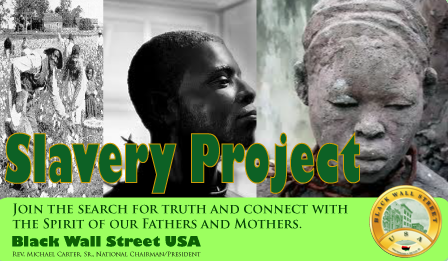
Alabama
Alaska
Arizona
Arkansas
California
Colorado
Connecticut
Delaware
Florida
Georgia
Hawaii
Idaho
Illinois
Indiana
Iowa
Kansas
Kentucky
Louisiana
Maine
Maryland
Massachusetts
Michigan
Minnesota
Mississippi
Missouri
Montana
Nebraska
Nevada
New Hampshire
New Jersey
New Mexico
New York
North Carolina
North Dakota
Ohio
Oklahoma
Oregon
Pennsylvania
Rhode Island
South Carolina
South Dakota
Tennessee
Texas
Utah
Vermont
Virginia
Washington
Washington D.C.
West Virginia
Wisconsin
Wyoming
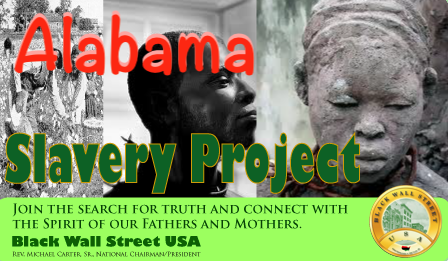
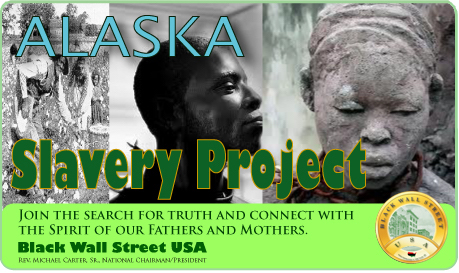



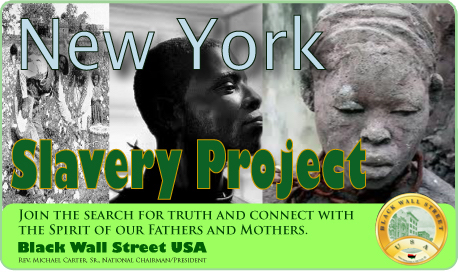

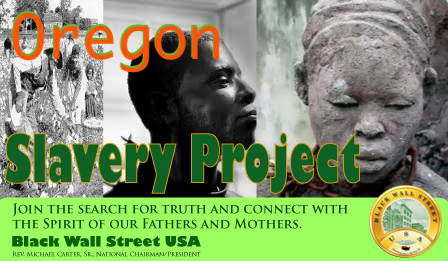
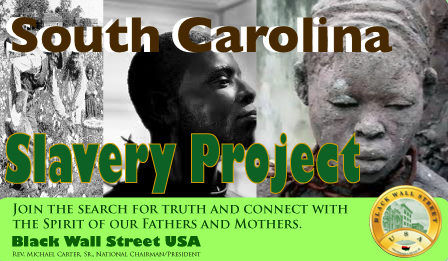
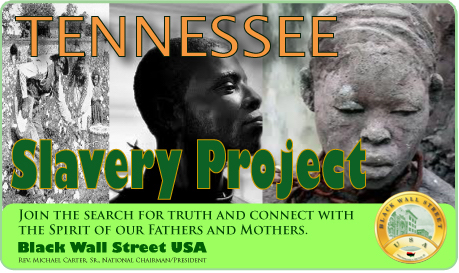
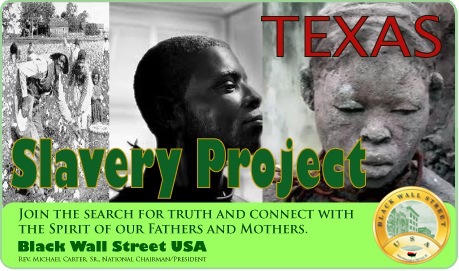



BlackWallStreet.org

Slave Records By State
See: Slave Records By State
Freedmen's Bureau Records
See: Freedmen's Bureau Online
American Slavery Records
See: American Slavery Records
American Slavery: Slave Narratives
See: Slave Narratives
American Slavery: Slave Owners
See: Slave Owners
American Slavery: Slave Records By County
See: Slave Records By County
American Slavery: Underground Railroad
See: American Slavery: Underground Railroad

